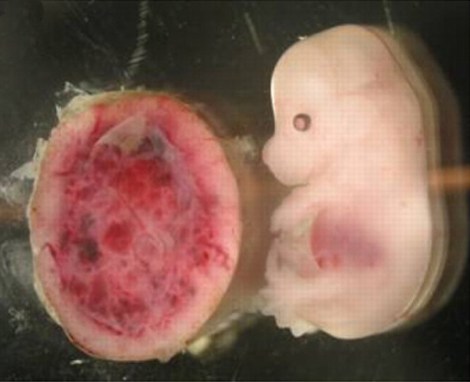Every once in awhile, maybe once in a blue moon, you may read something that’s so left-field, so alien that it literally changes your fundamental concepts. For me that happened last weekend as I read a paper by Hannibal et al. (2014) that has triggered in me a conversion event in how I view Genetics, “the Big G.”
Many of you have probably heard by now that even though the cells of our body have the same basic DNA template, there can be minor (or in the case of tumor cells perhaps even major) differences between them. But in spite of these differences, for the most part we tend to treat each cell from the same organism as if it essentially has the same genome as its neighbor. In the case of humans: that’s 23 chromosome pairs, with the same genes and the same nucleotide sequences, give or take the occasional mutation or rearrangement.

Well, guess what. Those minor differences may be more major than you ever thought possible and– what’s more– those major differences may not be pathological at all but are a totally normal and necessary part of life.
At this point, if you’re not already familiar with it, I’m going to introduce you to the term, endoreplication. Endoreplication is essentially the act of duplicating the genome as if a cell were going to divide but then stopping short of actually dividing (aka, cytokinesis), so the cell ends up with twice as many chromosomes. This result is known as endopolyploidy. Most often we think of polyploidy in terms of medical pathology, such as Trisonomy 21 or Down’s Syndrome, or in cases of later-stage cancer, in which malignant cells can show evidence of polyploidy as well as other chromosomal aberrations.
In the instance of the Hannibal et al. (2014) paper, however, polyploidy is totally normal. The team focused on cells within the mouse placenta known as trophoblast giant cells (TGC). Researchers had known for some time that TGCs are polyploid, having 50-1,000 duplicated copies of the mouse genome. Previously, scientists had also found that if endoreplication in TGCs is prevented, the embryo is aborted at about mid-gestation. One reason may be because TGCs are vital for instructing the remodeling of the maternal uterus in order to supply sufficient blood to the placenta, and therefore if TGCs are not functioning properly, the embryo is not getting the oxygen and other nutrients it needs. In addition, later in fetal development TGCs are also responsible for producing cytokines that help to keep the maternal immune system at bay. Both hypoxia and immunological assault have the potential to cause spontaneous abortion, suggesting that there should be strong forces of positive and negative evolutionary selection acting on the TGCs in particular.

Fetal mouse and its placenta. Image borrowed from here.
Hannibal et al. (2014) found that certain areas of the genome that are associated with functional enrichment in genes involved in neuron production (as well as gene-poor heterochromatic regions of the DNA) are preferentially UNDER-replicated. Scientists believe that this sort of selective underreplication is a twist on epigenetic silencing– only rather than silencing gene expression, those same or similar epigenetic mechanisms help to silence gene replication, effectively leading to the same thing on a more massive scale. Meanwhile, all the other genes that are vitally important in everyday cell metabolism, like housekeeping genes, are overreplicated and their gene products can be produced in mass quantities.
Since many of the neurogenesis-related genes are involved not just in brain development, but in cell maturation across many different organ types, their effective silencing in cells that require vast amounts of DNA material for rapid gene expression is probably yet another fail safe in maintaining TGC homeostasis. As we have found in autism, many of these neurogenic genes regulate timing of cell development [1]. For whatever reasons, TGCs may be particularly vulnerable to their expression, which could lead to reduced efficacy or even cell death and ultimately to the loss of the fetus [2].
Interestingly, there is also some suggestion that other cell types, such as certain glial cells of the brain, also use polyploidy as a conserved strategy. It will be fascinating to see in future what other cell types are in fact polyploid and how that plays a role in organ and tissue development [3].

Heh! This is just brilliant! Thank you so much for posting this. For reasons you’re sure to appreciate, I regard it as one of your “Emily’s All-Time Greatest Hits.”
And I referenced it at a thread on “Science” current events at Library Thing
Thanks, proximity! 🙂